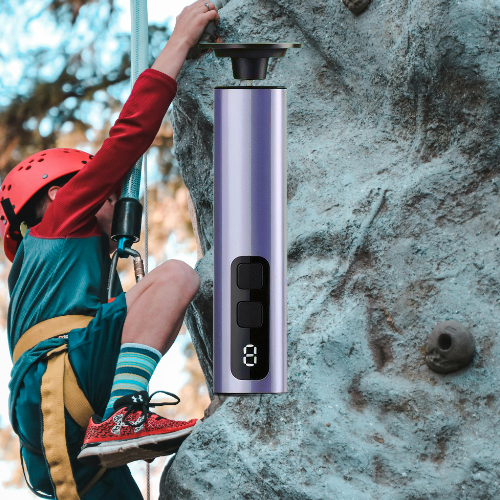
Expert Climber’s Guide: Prevent Flappers with Smart Hand Care
Share
Title:
Flappers & Heavy Calluses: How to Prevent Painful Skin Tears on Your Climb.
If you're a climber, your hands are everything. But while calluses protect your skin from wear, too much build-up can lead to one of the most dreaded injuries in climbing: flappers.
In this post, we’ll break down:
-
What flappers are
-
Why excessive calluses cause them
-
How to prevent and treat them so you can keep climbing without tearing up your hands
What Is a Flapper?
A flapper is when a piece of thickened skin tears away, usually leaving a raw, painful wound underneath. It’s most common in areas with built-up callus—especially the fingers and palms—and often happens when gripping rough holds or training hard.
They're not dangerous, but they hurt like hell, can bleed, and often sideline your sessions for days.
Why Heavy Callus Build-Up Is a Problem
While calluses are your skin’s way of adapting to climbing, too much of a good thing becomes a weakness.
Here’s why:
-
Thick callus layers can catch on holds, especially juggy or textured ones.
-
Dry, rigid skin is more likely to tear than flexible, hydrated skin.
-
Uneven buildup creates pressure points during grip, increasing the risk of skin peeling.
Think of a flapper like a hangnail on steroids—except you’re hanging your bodyweight from it.
How to Prevent Flappers (Without Losing Your Calluses)
1. Regular Callus Maintenance
Use a pumice stone, skin file, or sandpaper to smooth your calluses. Focus on high-friction areas and aim to reduce thick spots, not remove them completely.
💡 Pro tip: File your skin when it’s dry—not fresh out of the shower—to avoid over-thinning.
2. Hydrate Your Skin
Cracked or brittle skin is more likely to rip. Use a climbing-specific balm with shea butter, beeswax, or lanolin daily—especially before bed. Think of it like training recovery… for your hands.
3. Improve Grip Technique
If you’re pulling hard through your palms or slipping off holds often, you're stressing your skin unnecessarily. Work on:
-
Finger-dominant gripping
-
Precise footwork
-
Controlled movement over flailing dynos
4. Gradual Skin Conditioning
You wouldn’t jump into a 1RM deadlift cold—don’t expect your skin to handle intense volumes out of nowhere. Build up climbing intensity gradually to allow your skin to adapt.
What To Do If You Get a Flapper
Here’s how to handle it fast and safely:
-
Clean the wound with mild soap and water. Don’t skip this—you don’t want infection.
-
Trim the flap with sterile scissors or nail clippers. Don’t rip it.
-
Apply antiseptic and cover it with breathable tape or a hydrocolloid bandage.
-
Rest when needed. Your body (and skin) recovers best with time.
-
Moisturize every night to support healing.
Want to get back faster? Tools like the FlapStopper can help file and manage your calluses more precisely—minimizing future tears and keeping your hands climb-ready.
Final Thoughts
Calluses are essential—but excessive, unmanaged calluses are flapper factories. Keep your hands healthy, your skin prepped, and your send game strong by incorporating regular maintenance into your climbing routine.
🧗♀️ Got a favorite flapper prevention trick? Share it in the comments below—or check out our FlapStopper to take care of your calluses the smart way.
